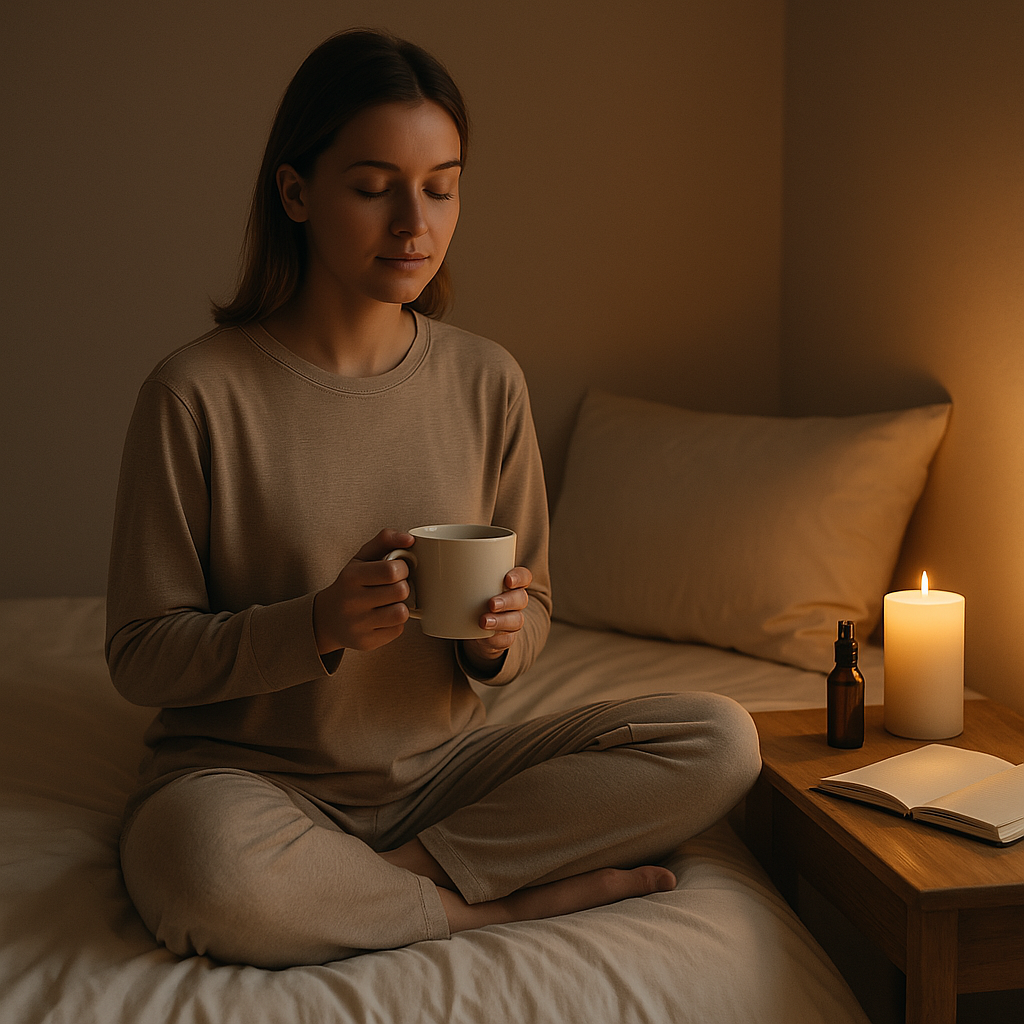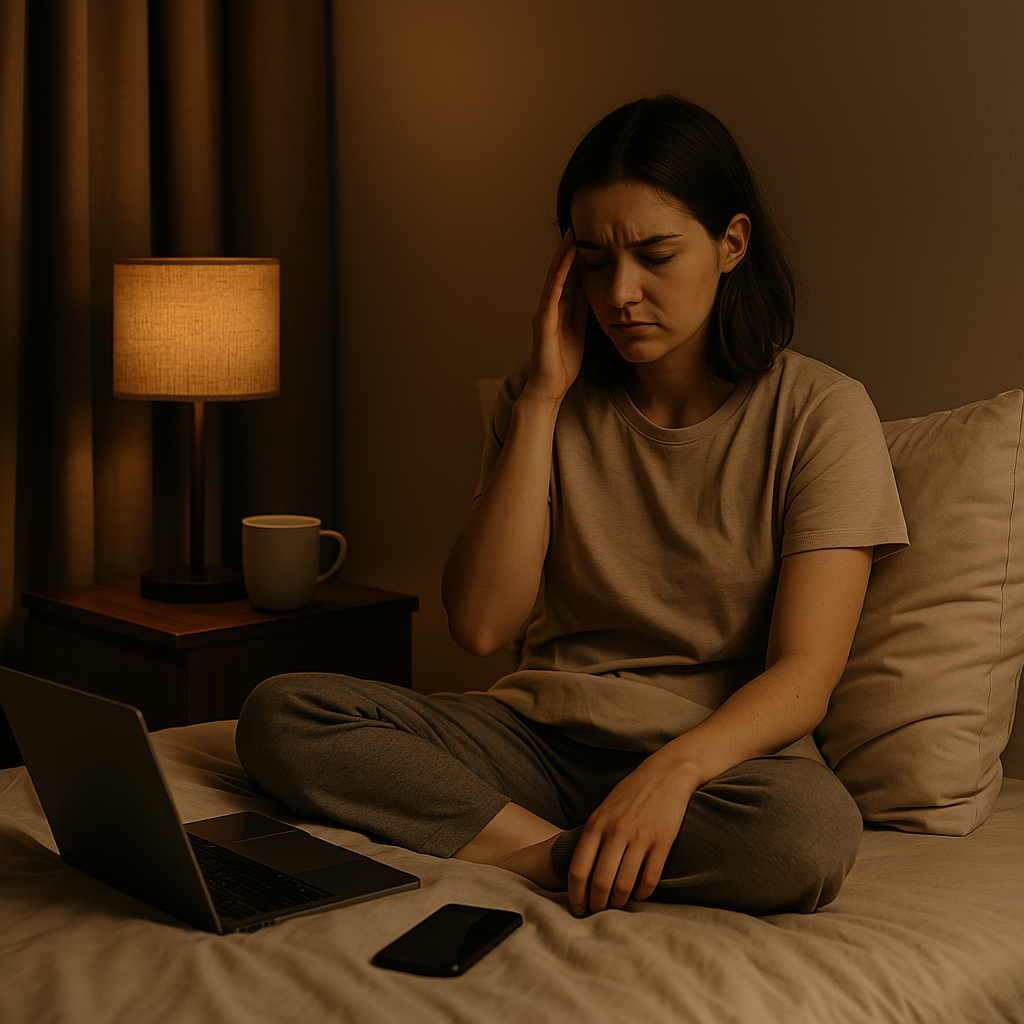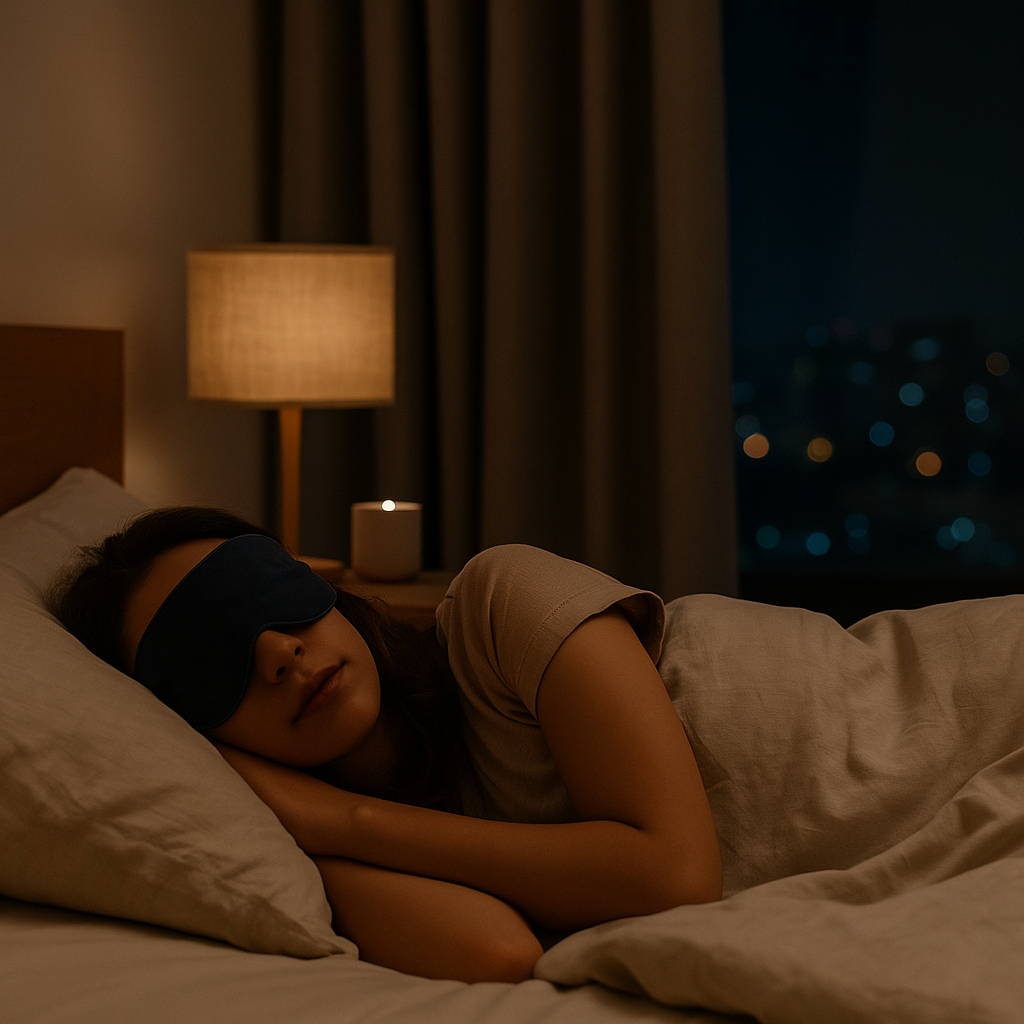Ever climbed into bed feeling exhausted… but still couldn’t fall asleep?
Your body’s begging for rest. But your brain’s still scrolling through tomorrow’s to-do list, rehashing old conversations, or wondering if it should check your phone one more time.
If that sounds familiar, you’re not broken — you’re just missing one crucial element: a wind-down routine.
In this guide, we’ll show you how to create a calming, science-backed bedtime ritual that helps your mind and body shift out of “go” mode and into deep, natural sleep.
Why Your Body Needs a Wind-Down Window
Sleep doesn’t happen on demand. It’s a physiological shift — one your body has to prepare for.
But modern life doesn’t allow for that. Bright screens, constant stimulation, late-night caffeine, and stress all keep your nervous system in “alert” mode.
A wind-down routine is your body’s cue that it’s safe to slow down — that the day is done. It’s your signal to switch from stress to stillness, from cortisol to melatonin.
The best part? It doesn’t need to be complicated. Just consistent.
The 4 Elements of the Perfect Wind-Down Routine
You don’t need a 10-step ritual or expensive tech. Just these four elements — grounded in neuroscience and designed to be doable.
1. Disconnect from Screens (60–90 mins before bed)
Why it matters: Blue light from your phone, tablet, or TV tricks your brain into thinking it’s still daytime — and suppresses melatonin, the sleep hormone.
What to do instead:
- Use “Night Shift” or “Blue Light Filter” modes if you absolutely must be on a screen.
- Even better: switch to a low-stimulus activity — reading, journaling, gentle stretches, or listening to calm music.
🕯️ Slower inputs = calmer mind. Your phone can wait. Your sleep can’t.
2. Lower the Lights
Why it matters: Your brain produces melatonin in response to darkness. Bright overhead lights (especially cool-white bulbs) interrupt that flow.
What to do instead:
- Use warm lamps or dimmable lighting in the evening.
- Avoid looking directly into screens or bright LEDs.
- Use a sleep mask 15–30 minutes before bed to train your body to recognise “wind-down mode”.
💤 Our 3D Sleep Eye Mask is designed for this exact purpose — full blackout comfort without pressure on your eyelids.
3. Calm the Body (and Mind)
Why it matters: You can’t sleep if your nervous system is still in “fight or flight.” You need to activate your parasympathetic (rest and digest) state.
What to do instead:
- Take a warm shower or bath (the drop in temperature afterwards triggers drowsiness).
- Try deep breathing (4–7–8), progressive muscle relaxation, or light stretching.
- Use calming scents (lavender, chamomile, sandalwood) or a bedtime tea.
✨ Rituals signal safety — and safety invites sleep.
4. Block Out Disruptions
Why it matters: Even mild background noise or flickering light can nudge your brain out of deep sleep without you realising it.
What to do instead:
- Use white noise or calming sleep sounds.
- Insert soft, reusable earplugs before bed.
- Wear your sleep mask from the moment you hit the pillow — or even earlier.
🔕 Our Noise-Cancelling Earplugs are ultra-soft, washable, and discreet — so your senses can switch off without distraction.
A 30-Minute Wind-Down Plan You Can Start Tonight
You don’t need hours — just half an hour of intention.
🕘 9:00PM
- Put your phone away. Switch to lamp light or candles.
- Change into your sleepwear. Brush teeth. No rush.
🕘 9:10PM
- Light stretch or gentle yoga.
- Brew a herbal tea (no caffeine!). Lavender or chamomile works wonders.
🕘 9:20PM
- Journal or read something light.
- Try a few deep breaths: inhale for 4, hold for 7, exhale for 8.
🕘 9:30PM
- Insert earplugs, put on your sleep mask.
- Lie down, close your eyes, and let go.
That’s it. Small. Simple. Powerful.
What to Avoid Before Bed (Common Mistakes)
Sometimes it’s not just what you do, but what you don’t do that matters.
🚫 Scrolling on your phone
🚫 Drinking alcohol or caffeine too late
🚫 Watching intense shows or news
🚫 Working late or replying to emails
🚫 Trying to “force” yourself to sleep without unwinding first
Your body can’t shift gears without a little help. Give it space.
Bonus Tips to Make It Stick
- Stack your habits: Attach your routine to something you already do (e.g. brushing your teeth).
- Use cues: Putting on your sleep mask can be a signal to your brain: “It’s time to wind down.”
- Keep it short + consistent: Even 15–30 mins nightly is enough to retrain your nervous system.
Build Your Sleep Ritual with Ease
Creating a sleep routine doesn’t have to feel like another task. The key is comfort, calm, and consistency.
✨ That’s why we created the Fall Asleep Faster Kit — everything you need to start your new ritual, in one beautifully boxed set.
Eye mask. Earplugs. Better nights. No effort.
Remember:
A good night doesn’t start at bedtime — it starts before.
Build your wind-down window, and let your body do what it was made to do: rest, repair, and restore.
Your next deep sleep is closer than you think.
Start tonight. 🌙
💬 Frequently Asked Questions (FAQs)
How long before bed should I start my wind-down routine?
Ideally, give yourself 30 to 60 minutes to fully disconnect from the day. Even 15 minutes can help if you’re short on time — the key is consistency, not perfection.
What’s the best activity to do before bed?
Anything that helps you slow down. Reading, light stretching, a warm shower, journaling, or simply sitting in silence with a herbal tea can all be powerful wind-down tools.
Can I still use my phone or watch TV before bed?
Technically yes — but it’s not ideal. Blue light from screens can suppress melatonin and delay sleep. If you do use screens, use a blue light filter, lower brightness, and opt for calm, low-stimulus content.
Do sleep masks and earplugs really help?
Yes — they reduce sensory input, which helps your brain stay in deeper sleep for longer. Light and noise are two of the most common sleep disruptors, even when you’re not fully aware of them.
What if I don’t feel sleepy after my routine?
That’s okay. Don’t force it — just focus on being relaxed, not “asleep.” Return to a calming activity like reading or deep breathing until sleepiness arrives. Sleep is more likely to come when you’re not chasing it.
How long does it take for a wind-down routine to start working?
Most people notice a difference within 3 to 5 nights, especially with reduced screen time and consistent cues. After a week or two, it can start to feel automatic — like muscle memory for your sleep cycle.



Leave a comment
This site is protected by hCaptcha and the hCaptcha Privacy Policy and Terms of Service apply.